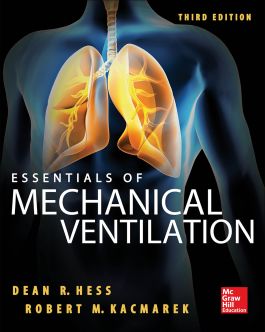Essentials of Mechanical Ventilation, Third Edition
Step 1. Download Adobe Digital Editions Both PC and Mac users will need to download Adobe Digital Editions to access their eBook. You can download Adobe Digital Editions at Adobe's website here.
Step 2. Register an Adobe ID if you do not already have one. (This step is optional, but allows you to open the file on multiple devices) Visit account.Adobe.com to register your Adobe account.
Step 3: Authorize Adobe Digital Editions using your Adobe ID. In Adobe Digital Editions, go to the Help menu. Choose “Authorize Computer.”
Step 4: Open your file with Adobe Digital Editions. Once you’ve linked your Adobe Digital Editions with your Adobe ID, you should be able to access your eBook on any device which supports Adobe Digital Editions and is authorized with your ID. If your eBook does not open in Adobe Digital Editions upon download, please contact customer service
This trusted guide is written from the perspective of authors who have more than seventy-five years' experience as clinicians, educators, researchers, and authors. Featuring chapters that are concise, focused, and practical, this book is unique. Unlike other references on the topic, this resource is about mechanical ventilation rather than mechanical ventilators. It is written to provide a solid understanding of the general principles and essential foundational knowledge of mechanical ventilation as required by respiratory therapists and critical care physicians. To make it clinically relevant, Essentials of Mechanical Ventilation includes disease-specific chapters related to mechanical ventilation in these conditions.
Essentials of Mechanical Ventilation is divided into four parts:
Part One, Principles of Mechanical Ventilation describes basic principles of mechanical ventilation and then continues with issues such as indications for mechanical ventilation, appropriate physiologic goals, and ventilator liberation.
Part Two, Ventilator Management, gives practical advice for ventilating patients with a variety of diseases.
Part Three, Monitoring During Mechanical Ventilation, discusses blood gases, hemodynamics, mechanics, and waveforms.
Part Four, Topics in Mechanical Ventilation, covers issues such as airway management, aerosol delivery, and extracorporeal life support.
Essentials of Mechanical Ventilation is a true “must read” for all clinicians caring for mechanically ventilated patients.

